13 Best Flowers To Grow In Ohio (With Pictures)
-

- Last updated:

Flowers are there to make our gardens and yards look and smell beautiful. There are thousands of different flower species, each unique in its own way. Of course, not all flowers are suitable for all parts of the world, so you should consider your location before planting a certain flower species.
To all flower-lovers living in Ohio, today is your lucky day! Check out our list of the 13 best flowers to grow in Ohio. This list will help you pick out the next flower you’ll plant in your garden and provide you with some tips on how to take care of it.

The 13 Best Flowers To Grow In Ohio
1. Daylily

| USDA Hardiness Region | 3–9 |
| Sun | Full sun/partial shade |
| Soil | Well-drained/sand or clay |
| Bloom time | Late spring to autumn |
Daylilies are a stunning perennial plant with bright, colorful, bell-shaped flowers. The plant got its name because the flowers last only a day, after which they’re replaced with new flowers. Daylilies do not require a lot of maintenance and are very adaptable, so people love to have them in their gardens. They bloom from late spring to autumn and depending on the variety, they can grow anywhere from 2–4 feet tall. Daylilies can cost anywhere from $3 to over $500 per plant.
- Do not require a lot of maintenance
- Very adaptable
- Some daylily species can be expensive
2. Poppy

| USDA Hardiness Region | 3–8 |
| Sun | Full sun |
| Soil | Well-drained/gravelly or sandy |
| Bloom time | May to August |
The Poppy is a lovely plant, about 1–3 feet tall. It blooms from May to August, bearing beautiful red flowers, although different species can have white, pink, or even yellow flowers. They usually last for a day, after which they fall off. Poppies need to be planted in full sun for proper growth, as they cannot grow in the shade. New poppy plants commonly die after their fruit ripens, but older plants are very frost-tolerant.
- Older plants are very frost-tolerant
- Need to be planted in full sun
3. Columbine

| USDA Hardiness Region | 3–8 |
| Sun | Full sun/partial sun |
| Soil | Acidic/moist/well-drained |
| Bloom time | Spring to summer |
Columbine is one of the hardiest plants native to the USA. These perennials can be anywhere from 1–3 feet high and must be planted in full sun. If you live in hotter areas, it might be best to plant them in partial sun as too much exposure can damage the plant. Their flowers are unique, and each flower has five petals with long spurs that contain nectar. Columbines have a short lifespan of only 2–3 years, although they grow pretty quickly.
- Among the hardiest plants in the USA
- Grows pretty quickly
- Unique flowers with five petals
- Short lifespan
4. Petunia

| USDA Hardiness Region | 10–11 |
| Sun | Full sun |
| Soil | Well-drained |
| Bloom time | Spring to autumn |
Petunias can be a perennial and annual plant, depending on the species. Their flowers are commonly oval or trumpet-shaped and come in six primary colors: red, pink, yellow, purple, blue, and white. It’s an extremely strong plant that can survive harsh and frosty conditions. They are commonly 6–18 inches high, and they bloom from spring to autumn. For their best growth, you should plant Petunias in spring. These plants are undemanding and low-maintenance, making them perfect for people who want a pretty garden that’s easy to take care of.
- Extremely strong
- Can survive harsh and frosty conditions
- Low-maintenance
- Prone to pest issues
5. Dahlia
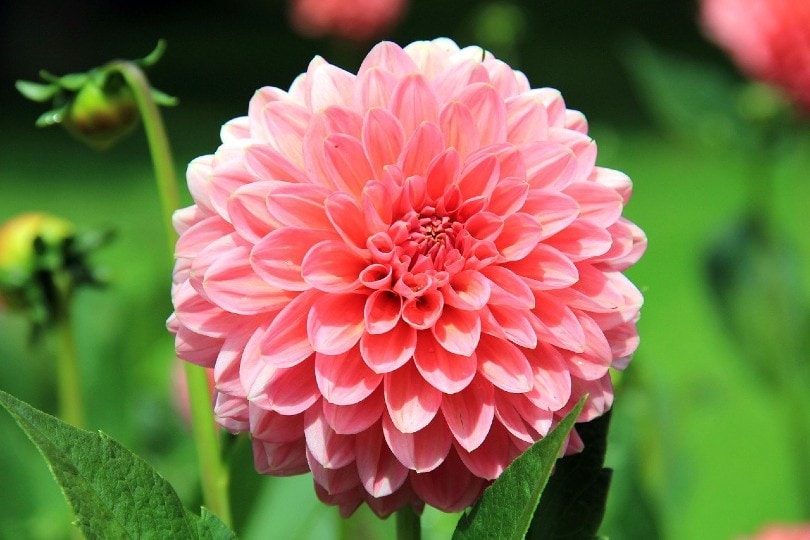
| USDA Hardiness Region | 8–10 |
| Sun | Full sun |
| Soil | Well-drained/fertilized |
| Bloom time | Summer to autumn |
Dahlias are annual plants with large, vibrant flowers, which are commonly scentless. They grow the best in full sun and can be 15 inches to over 6 feet tall, depending on the species. They are not frost-tolerant, so during winters, you need to place them in a dry location with a temperature of 45–55°F. Dahlias will need regular watering to grow appropriately. There are hundreds of different Dahlia species, so you can choose the one that best suits your needs.
- Hundreds of different species
- Not frost-tolerant
- Scentless flowers
- Need a lot of water
6. Pansy
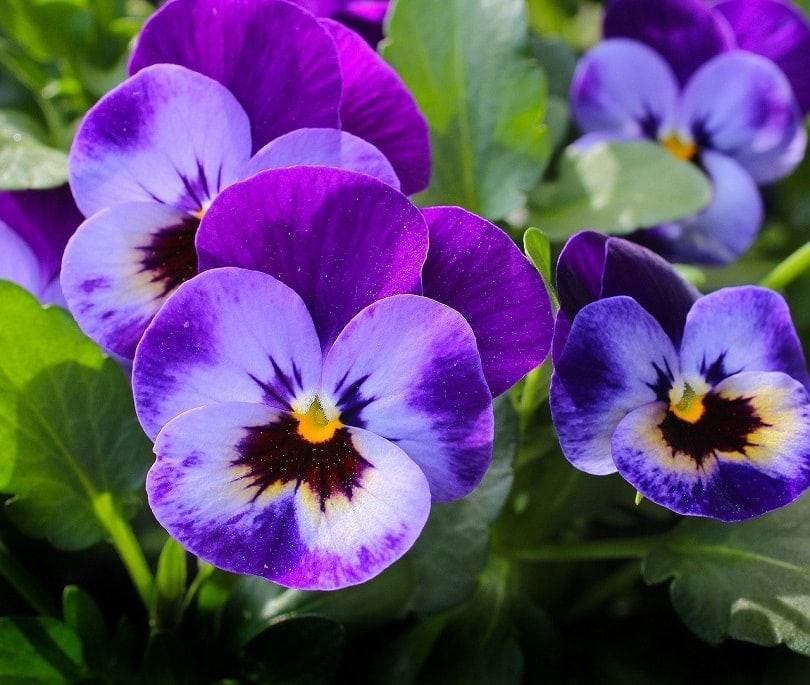
| USDA Hardiness Region | 4–8/8–11 |
| Sun | Full sun/partial sun |
| Soil | Well-drained/moist |
| Bloom time | Fall to winter |
The Pansy is an excellent plant for beginner gardeners as it doesn’t require much maintenance. Depending on the climate, pansies can be annuals or perennials. In USDA hardiness regions from 4–8, they are considered perennials while in the regions 8–11 as annuals. Pansies grow about 6–12 inches tall. Their flowers have five petals and are usually yellow, blue, or white. Although they need to be planted in full or partial sun, they thrive in colder conditions.
- Excellent plant for beginner gardeners
- Don’t require much maintenance
- Can be annual or perennial
- Only thrives in colder conditions
7. Blue Flag Iris
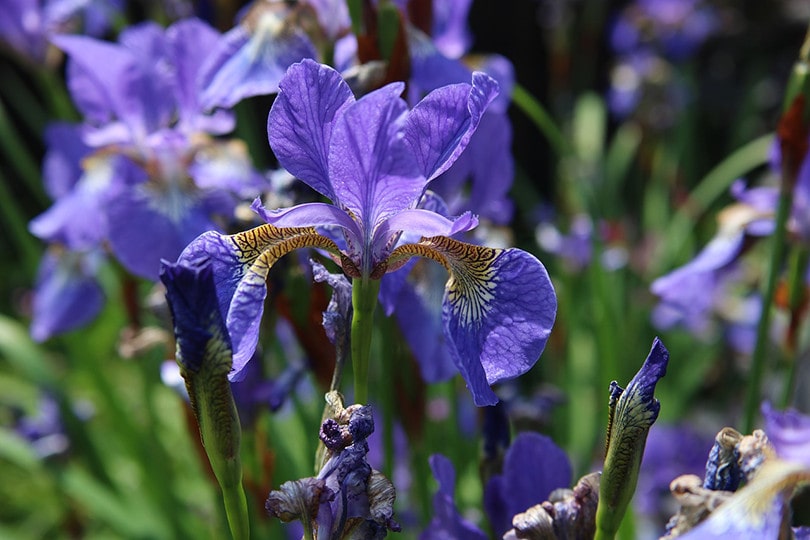
| USDA Hardiness Region | 3–9 |
| Sun | Full sun/partial sun |
| Soil | Moist/rich |
| Bloom time | Spring to late summer |
Blue Flag Iris is a unique blue/violet flower that can be 1–3 feet high. It’s an undemanding plant that can easily grow in any garden. Blue Flag Iris can thrive in wet conditions, so it’s great for rainy areas. It attracts hummingbirds, so your garden will be colorful and filled with birds chirping. The plant needs enough sun to grow, so it’s best to plant it in full to partial sun. If in the shade, the plant might not flower.
- Undemanding plant
- Easy to grow in any garden
- Thrives in wet conditions
- Attracts hummingbirds
- It might not flower in the shade
8. Turtlehead
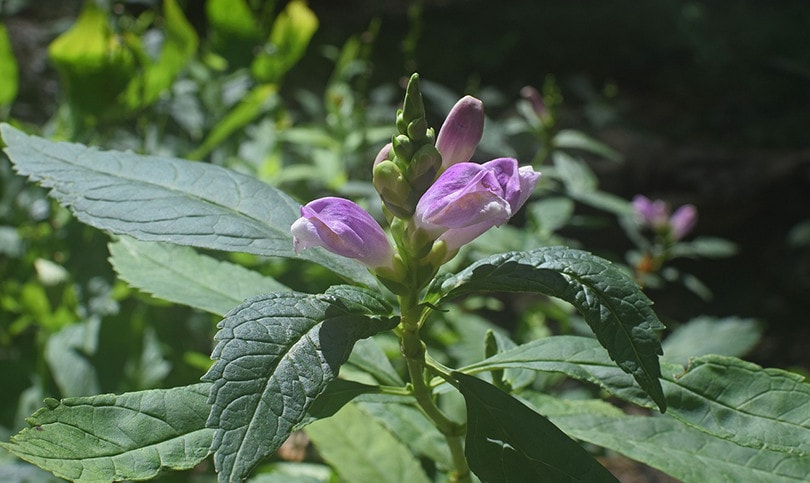
| USDA Hardiness Region | 3–8 |
| Sun | Full sun |
| Soil | Moist |
| Bloom time | Late summer to fall |
Turtlehead is a perennial plant native to North America. It grows the best in full sun and moist soils, and it can reach 3–4 feet high. Turtlehead bears white flowers, which resemble a turtle’s head, which is how the plant got its name. It attracts hummingbirds and butterflies, so any garden with this flower will always be cheerful. The plant doesn’t require much maintenance, which is convenient for gardeners, although you will need to water it regularly.
- Interesting flowers that resemble a turtle’s head
- Attracts hummingbirds and butterflies
- It doesn’t require much maintenance
- Needs regular watering
9. Yarrow
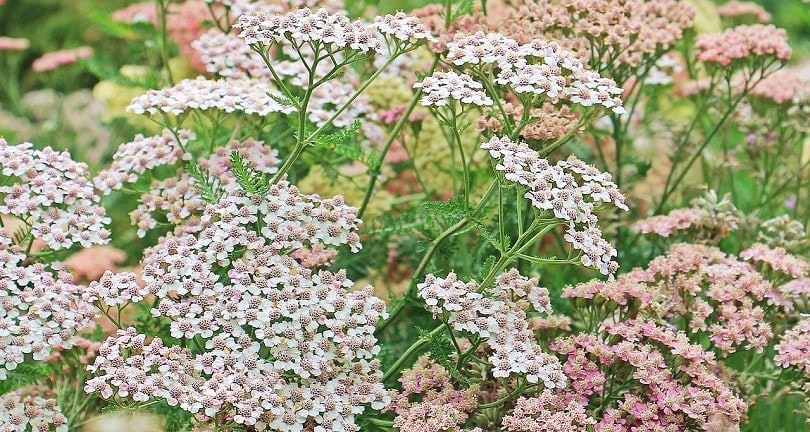
| USDA Hardiness Region | 3–9 |
| Sun | Full sun/partial shade |
| Soil | Dry/Rich |
| Bloom time | Spring to summer |
Yarrow is commonly a wild herb, but it can be grown in gardens as a perennial. People use it in medicine, and it is also edible. This plant doesn’t require maintenance, so it will quickly grow anywhere. It requires full sun or partial shade for the best growth, and it can be 24–64 inches tall. Their flowers are small and white, and they bloom from spring to summer. Yarrow has great frost tolerance and can withstand cold weather.
- No need for maintenance
- Great frost tolerance
- Withstands cold weather
- Although edible, it’s not very tasty
10. Allium
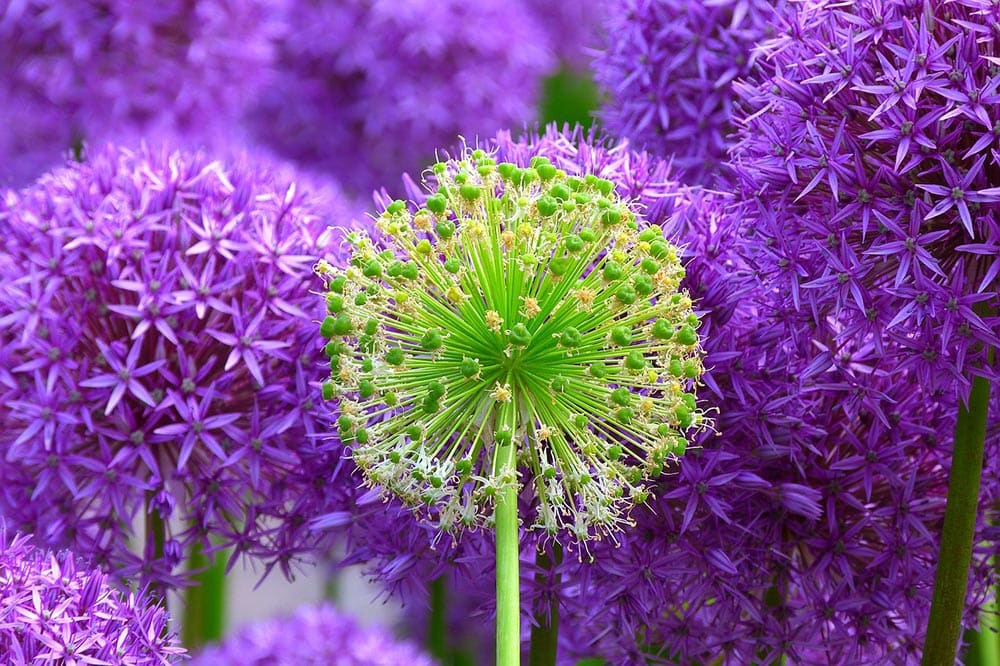
| USDA Hardiness Region | 4–10 |
| Sun | Full sun |
| Soil | Well-drained |
| Bloom time | Spring to summer |
Allium, also known as ornamental onion, is a fast-growing plant that grows in USDA Hardiness regions of 4–10. It’s cold tolerant and drought-resistant, which is convenient during wintertime. Their flowers are purple and resemble small pom-poms. Alium usually grows to be 1–4 feet tall, and it’s an undemanding plant that’s easy to grow. If there’s sufficient rain outside, there’s no need to water this plant. Otherwise, you should water it every 3 to 5 days.
- Cold tolerant
- Drought-resistant
- Undemanding
- Easy to grow
- If there’s sufficient rain, there’s no need to water
- If there’s no rain, it will need watering
11. Begonia

| USDA Hardiness Region | 9-11 |
| Sun | Shade/filtered light |
| Soil | Moist/well-drained |
| Bloom time | Summer |
Begonia is a succulent plant known for its colorful flowers. The flowers are commonly red, yellow, orange, pink, or white. Unlike most plants, Begonias prosper in the shade and burn if exposed to bright sunlight. Still, that doesn’t mean that they are frost-resistant. In fact, they do not tolerate cold weather very well. They can be anywhere from 8 inches tall to over 2 feet tall. Although they are stunning plants, they have an issue with rotting which can be inconvenient. They are also deer and rabbit resistant.
- Prosper in shade
- Deer and rabbit resistant
- Burn when exposed to bright sunlight
- Do not tolerate cold weather
- Issues with rot
12. Zinnia

| USDA Hardiness Region | 3–10 |
| Sun | Full sun |
| Soil | Well-drained/rich |
| Bloom time | Spring to fall |
Zinnia is a low-maintenance, fast-growing plant whose flowers come in all shapes and sizes. The flowers are pink, yellow, orange, purple, red, or white, so this plant will be a cheerful addition to any garden. Depending on the variety, zinnias can be anywhere from 1–8 feet tall. They handle drought very well, and they are tolerant to poor soils— although it should be well-drained. They are prone to leaf spots and blight which harms them if not treated.
- Low-maintenance
- Fast-growing
- Handle drought well
- Tolerant to poor soils
- Prone to leaf spots and blight
13. Viola
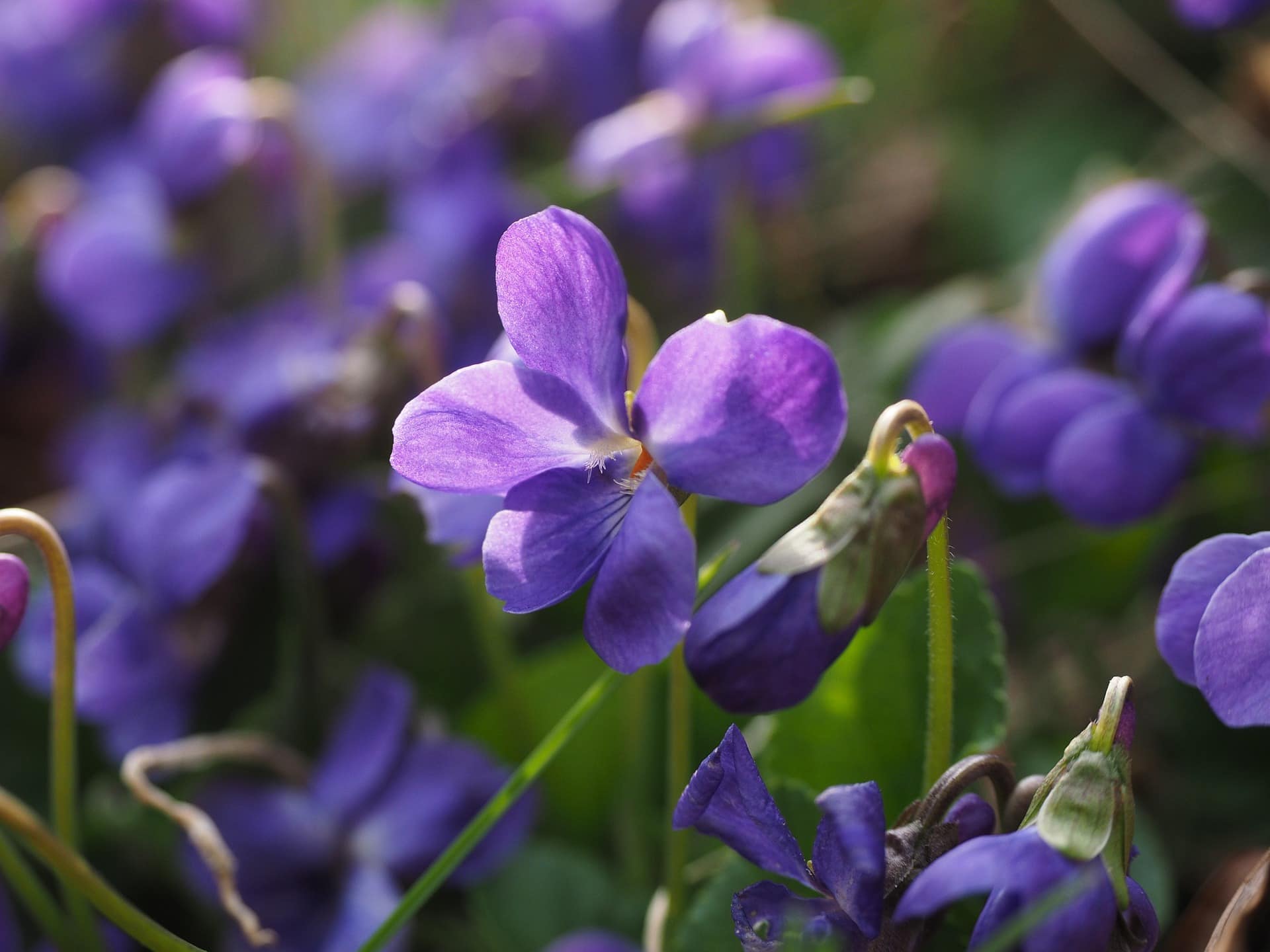
| USDA Hardiness Region | 3–9 |
| Sun | Full sun/partial shade |
| Soil | Moist/rich/well-drained |
| Bloom time | Spring |
Viola is another plant that can be both perennial and annual. Their flowers commonly have five colors: purple, white, blue, or pink. It’s a plant that’s easy to grow, and it prospers in moist, humus-rich soil. Violas are only 4–10 inches tall, but they still impress with their stunning colors. Unfortunately, many species of Violas are short-lived, so you should regularly plant new seeds. They can have problems with slugs and snails.
- Easy to grow
- Short-lived
- Can have issues with slugs and snails

Conclusion
As you can see, there are stunning flower options that you can grow in Ohio. The possibilities are limitless, and most of the plants are low-maintenance which is great for new gardeners. Take a look at the list one more time, check out all the pros and cons, and decide which flower will be a new addition to your garden.
You May Also Like:
- 11 Best Vegetables to Grow in Ohio (With Pictures)
- How and When to Plant Pansies – What You Need To Know!
Featured Image Credit: pakn, Shutterstock
Contents
